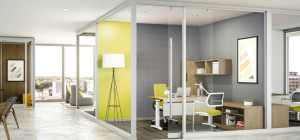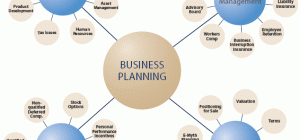 It’s no secret that the quality of work affects the employees’ productivity and their mood, too. Nobody loves working in a dark, cold and noisy place. Each one of these factors contributes to employees being able to focus on their tasks and the level of their effectiveness.
It’s no secret that the quality of work affects the employees’ productivity and their mood, too. Nobody loves working in a dark, cold and noisy place. Each one of these factors contributes to employees being able to focus on their tasks and the level of their effectiveness.
Having too many distractions at the office doesn’t do any good for the overall business. People need a relaxing, comfortable and buzz-free working environment to give their maximum at work. Office acoustics play a significant role here and a few following tips will help you improve them.
Make hard surfaces softer
Every surface, whether it’s the floor, furniture or the layout, either absorbs or reflects sounds. In general, hard surfaces will reflect the noise, carrying it beyond the designated areas. These surfaces include wood, ceramic and porcelain and add a lot to the sound pollution in the workplace. Regarding the furniture, plush seat coverings are all you need to absorb more sounds. Whenever you can switch to vinyl (the easiest is to do it with flooring), rubber and cork as they are softer surface.
Use absorbing items and installations
There are other absorbing surfaces which you can use without losing the aesthetics. If you have the budget for it (as these tricks are a bit expensive), then consider drop ceilings which absorb sounds and are a better alternative to cubicles. You could also decorate the walls with pieces of art that also serve as soundproofing materials.
Sound-absorbing panels are also an excellent installation that simply stops the sounds from going somewhere they’re not supposed to go. In essence, sounds are just waves of air that moves around, which means you can control where they go. The panels can be strategically placed to contain the sound waves. They will prevent the sounds to bounce off of walls and ceilings. And what’s also great about them is that they come in various sizes and colours, so you have free-standing panels, wall panels and ceiling panels, you can even choose the material – fabrics, plastics or foam.
Ceiling tricks
As sounds bounce off the ceiling, it’s important to choose the right type of the ceiling. Some types absorb is, while others serve as insulation, and there are some that serve as both.
The insulation is dependable on density, mass and the ability of a specific material to stop a sound from going to another room or to block the outside noise. Materials to look out for are metal, mineral fibre, wood, exposed concrete, stretch and plasterboards. What’s also important is not to decrease the level of the ceiling performance when you’re installing light fixtures, ventilation, etc. In some cases, it’ll be necessary to add acoustic hoods or ducting to additionally improve workplace acoustics.
Block the outside noise
There are simply too many loud sounds coming from the outside world into the workplace. A few solutions like sound-blocking inserts and noise-cancelling windows can help the issue. The fact is – the closer you are to a good location, like the downtown, the more you have to struggle with the noise. In case the workplace is located in a quiet area, then maybe all you need are soundproof blinds or noise-reduction shades.
Tricks with doors
Doors naturally have some weak spots in their partition, but you can use it in a different way – simply allow the background sounds to find their way into the room as a form of privacy strategy. However, it’s tricky if the background noises are too low, so it’s best to have airtight doors in that case. If you’re considering sliding doors, know that the space between the door and the partition can cause problems. Acoustic seals could help here, as well as increasing the thickness of the door.
Dedicated areas to isolate different sounds
It is highly important to ensure the employees have different areas for different purposes. Spaces like conferences rooms and breakout areas to make a phone call or have a small meeting are necessary. This will allow the rest of the team to work effectively and undisturbed in silence. You need to ensure your employees to have freedom of movement so that they can isolate themselves in case they will have to do a task that could break other employees’ focus.
Power of plants
We can’t deny that there’s a strong, positive connection between human beings and nature. People simply function better in nature and are in a better mood. Bearing in mind the fact that we spend a lot of time in closed spaces like the office or any other workplace, it’s necessary for us to have some visible connection to nature outside. This will bring many benefits, including providing privacy and reduction of the noise level inside the workplace.
Plants are very easy to incorporate into almost any design – there’s something about the greenery that looks elegant and beautiful. You can separate the cubicles with plants or create a green wall. A green wall is even better at absorbing sounds than many building materials. Plants are great at diffusing and deflecting sounds. You just need to spread them evenly across the room and use large pots which can hold more compost.
Masking sounds with music
Maybe it sounds weird to fight sounds with other sounds but music has proven to be very effective. It can help the employees focus by drawing attention from the chatter and usual office noises. It can serve as a sensory experience for both the employees and visitors.
Masking less popular sounds with more popular ones have proven to be surprisingly effective, especially when it comes to white noise like rainfall or random sounds of nature. This technique is known as sound masking.
In conclusion
Fighting acoustic distractions is very important for a productive workplace. Your employees deserve the best conditions so that they could be as effective as possible.







